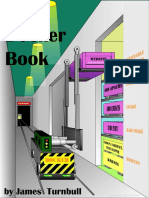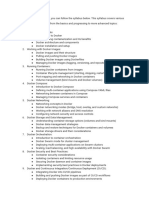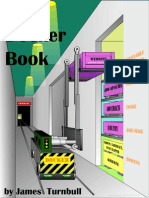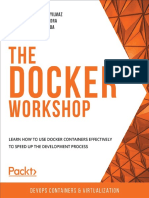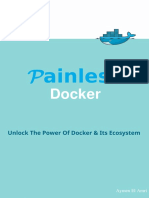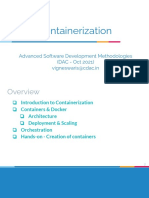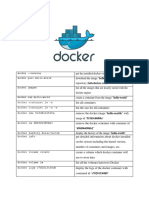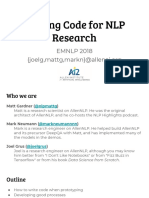0% found this document useful (0 votes)
31 views31 pagesSample .Introduction To Docker Dark
This document is a comprehensive guide to Docker, covering its introduction, installation, container management, images, networking, volumes, and security best practices. It is designed for developers, system administrators, and DevOps engineers looking to learn Docker basics and advanced concepts. The book includes practical examples, troubleshooting tips, and insights into using Docker in CI/CD pipelines and microservices architecture.
Uploaded by
gowtham naniCopyright
© © All Rights Reserved
We take content rights seriously. If you suspect this is your content, claim it here.
Available Formats
Download as PDF, TXT or read online on Scribd
0% found this document useful (0 votes)
31 views31 pagesSample .Introduction To Docker Dark
This document is a comprehensive guide to Docker, covering its introduction, installation, container management, images, networking, volumes, and security best practices. It is designed for developers, system administrators, and DevOps engineers looking to learn Docker basics and advanced concepts. The book includes practical examples, troubleshooting tips, and insights into using Docker in CI/CD pipelines and microservices architecture.
Uploaded by
gowtham naniCopyright
© © All Rights Reserved
We take content rights seriously. If you suspect this is your content, claim it here.
Available Formats
Download as PDF, TXT or read online on Scribd
/ 31









